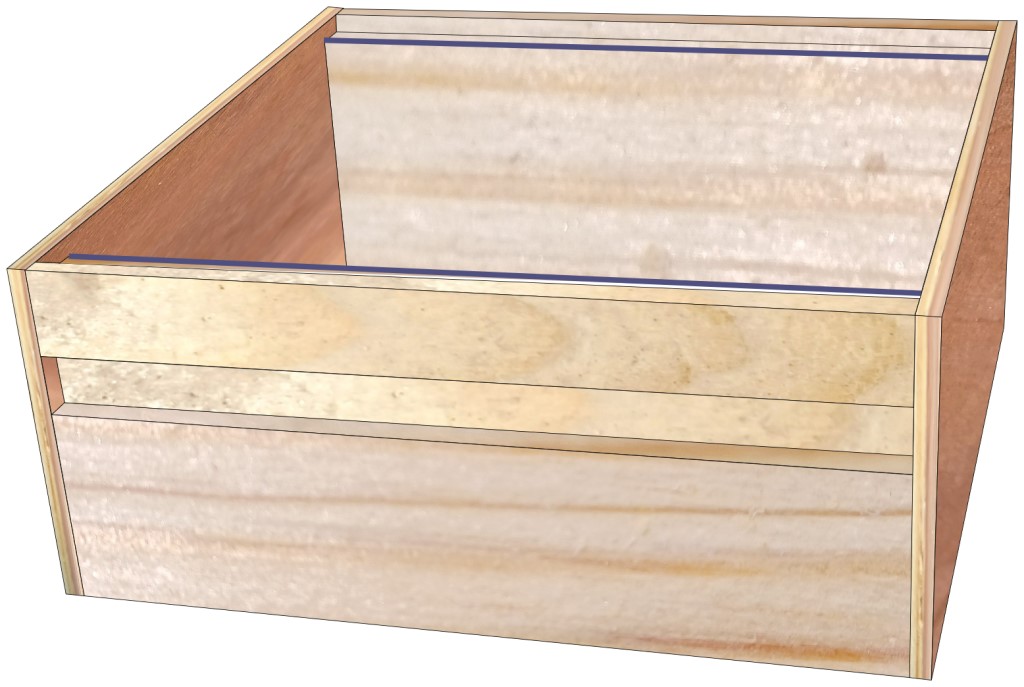Rose Hive
Tim Rowe, a commercial beekeeper in County Cork, Ireland, became increasingly concerned about the numerous difficulties and stresses that bees were being subjected to. His approach was to study how bees survive and thrive in the wild and applied his ideas to modern beekeeping. The Rose hive and the Rose method are the outcome of those studies.
The Hive
The Rose hive is made of boxes all of the same size, a one size box system or OSB. The boxes fit with National floors, crown boards, etc, and the frames are 14″ x 7½” with long lugs like the National frame. Two Rose boxes are equivalent to a National ‘brood and a half’. This single walled hive takes 12 self spacing Hoffman frames.
The Method
No queen excluders are used so there is no division into brood boxes and supers. The bees create their nest without restriction, as they would in the wild, and expand the nest as they see fit. Most frames are fitted with foundation but Tim recommends that roughly a quarter of the frames be fitted with wax starter strips, allowing the bees to draw out as much drone brood as they desire.
| HIVE DATA | NATIONAL | NATIONAL 14×12 | ROSE HIVE | COMMERCIAL |
|---|---|---|---|---|
| Brood frame | 14″ x 8½” | 14″ x 12″ | 14″ x 7½” | 16″ x 10″ |
| Super frame | 14″ x 5½” | 14″ x 5½” | 14″ x 7½” | 16″ x 6″ |
| Frames / brood box | 11 | 11 | 12 | 12 |
| Cells / brood box | 54,000 | 80,000 | 51,500 | 80,000 |
| Lug length | 1½” | 1½” | 1½” | 5/8″ |
The amount of comb space in one Rose box is adequate for a modest colony, being slightly less than the National box, but not sufficient for a very prolific colony, where two Rose boxes will be required.

The Rose Year
It is believed that excessive feeding with granulated sugar undermines the the health of colonies, so Rose hive beekeepers tend to overwinter their colonies where ever possible on their natural honey crop. However, it is recognised that there will be occasions when bad weather prevents natural foraging, and some sugar feeding will be required.
Removing old comb
In the spring the old comb is rearranged to be in the upper box, from where it will be worked upwards and removed at the end of the season for recycling. No combs should be more than three years old. This operation is the only stressful intrusion in the whole year, but avoids the even more stressful alternatives of Bailey frame change or shook swarm techniques.
From spring to the the middle of June, when brood nest expansion is at its peak, new boxes of foundation are added to spread the brood nest, either by inserting under the nest or into the middle of the nest. Conventional beekeepers may find this concept rather alien, but the bees accept it and rapidly draw out the foundation.
After mid-June, additional boxes with foundation are added above the brood nest for the bees to store honey.
Advantages of using the Rose method
- First and foremost, simplicity, as all parts are compatible and interchangeable. This makes splitting the hive for queen rearing, swarm control, etc, much simpler. Apart from frames, all other National and Commercial hive parts are compatible.
- Congestion in the brood nest is removed as there is no queen excluder to impede progress. This will help reduce stress.
- Colonies build more rapidly if new boxes are added when and where they are needed.
- Insertion of new boxes into the middle of the brood nest reduces the work the bees would have to do to expand the brood nest. Normally, they would have to remove the cap of honey at the top of the hive.
- Swarming is reduced due to less congestion.
- Starter strips in a quarter of the frames allow the bees to build as much drone comb as they wish.
Disadvantages of the Rose method
- Warning! A full Rose box of sealed honey will weigh c50lbs (22kg).
- The marine plywood used for two sides of the boxes does not have the same durability or insulation as western red cedar. A bee-safe form of wood preservative may be required.
- Some beekeepers claim bees do not overwinter well in Rose hives.
- With no queen excluder the lack of a clear demarcation between brood and stores is often seen as a disadvantage.
- There is narrow spacing throughout which precludes using wide spacing in boxes used as supers.
More information
Devotees of Rose hives would encourage both new and old beekeepers to read Tim Rowe’s book ‘The Rose Hive Method‘, ISBN 978-0-9567026-0-9, and follow the advice to allow your bees the freedom to arrange their affairs as they wish.